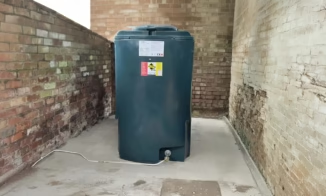Installing a bunded oil tank on your property can be a significant decision. Beyond simply choosing the right size or model, you’ll need to consider the regulations around placement and planning permission. Many homeowners ask the same question: Do I actually need planning permission for an oil tank? The answer depends on your circumstances.
In this guide, we’ll break down the UK’s permitted development rules, explain the scenarios where planning permission is essential, and highlight the benefits of bunded oil tanks. By the end, you’ll have a clear understanding of what’s required to stay compliant while keeping your property safe and efficient.
Understanding Permitted Development
For most domestic properties, oil tanks are considered “permitted development,” meaning you don’t need formal planning permission as long as specific conditions are met. These conditions include:
- Capacity: Your tank must not exceed 3,500 litres. Larger tanks automatically fall outside permitted development.
- Placement: The tank should be at least 1.5 metres away from any building and 1 metre from a property boundary.
- Fire safety: Keep your tank clear of flammable materials, sheds, fences, and wooden structures.
- Aesthetics: In most standard properties, a tank can be installed in the garden without issue, but restrictions may apply in designated areas.
These rules are designed to balance convenience for homeowners with safety and environmental protection. Even if you meet the conditions, it’s always worth confirming with your local authority, as councils may apply additional criteria.
When Planning Permission Is Required
While many installations qualify as permitted development, there are specific scenarios where planning permission is almost always required:
- Conservation areas: Properties in conservation zones often face stricter requirements to preserve character. An oil tank visible from the road may trigger the need for approval.
- Listed buildings: Installing an oil tank on or near a listed property generally requires prior consent due to the building’s protected status.
- Commercial installations: Large-scale or multi-tank setups for businesses, farms, or industrial sites usually demand formal planning permission.
- Exceeding size thresholds: Tanks over 3,500 litres go beyond permitted limits and will require approval.
Additionally, if your tank is located near watercourses or drains, you may need to comply with the Control of Pollution (Oil Storage) Regulations, which set strict rules for preventing leaks and protecting the environment.
Benefits of Bunded Oil Tanks
Choosing a bunded oil tank offers significant advantages:
- Safety: The double-layer design reduces the chance of oil leaks escaping into soil or water.
- Environmental protection: Bunded tanks meet UK oil storage regulations, helping homeowners avoid costly fines or cleanup fees.
- Insurance savings: Many insurers view bunded tanks more favourably, which can reduce premiums.
- Peace of mind: Knowing your system is compliant lowers the risk of future disputes or issues if you sell your property.
Step-by-Step Process for Homeowners
If you’re considering a new installation, follow these steps to ensure a smooth process:
- Check the size and placement: Make sure your planned tank fits within permitted development rules.
- Consult your council if in doubt: Especially if your home is in a conservation area or is listed.
- Hire a certified installer: Professionals understand both building regulations and OFTEC guidelines.
- Keep all paperwork: Retain installation certificates and compliance documents.
- Review regularly: Inspect your tank each year for wear, cracks, or signs of leaks.
Internal Resources for Further Reading
If you’d like to explore more before making a decision, take a look at our related posts:
Final Thoughts
Installing an oil tank is more than a practical decision—it’s a legal one too. Most domestic bunded tanks fall within permitted development, but conservation areas, listed buildings, and larger tanks all require planning permission. By understanding the rules, consulting your local authority, and working with a certified installer, you’ll ensure your storage solution is safe, compliant, and efficient.
With the right preparation, your bunded oil tank won’t just meet regulations—it will protect your home, reduce risks, and provide reliable heating for years to come.







